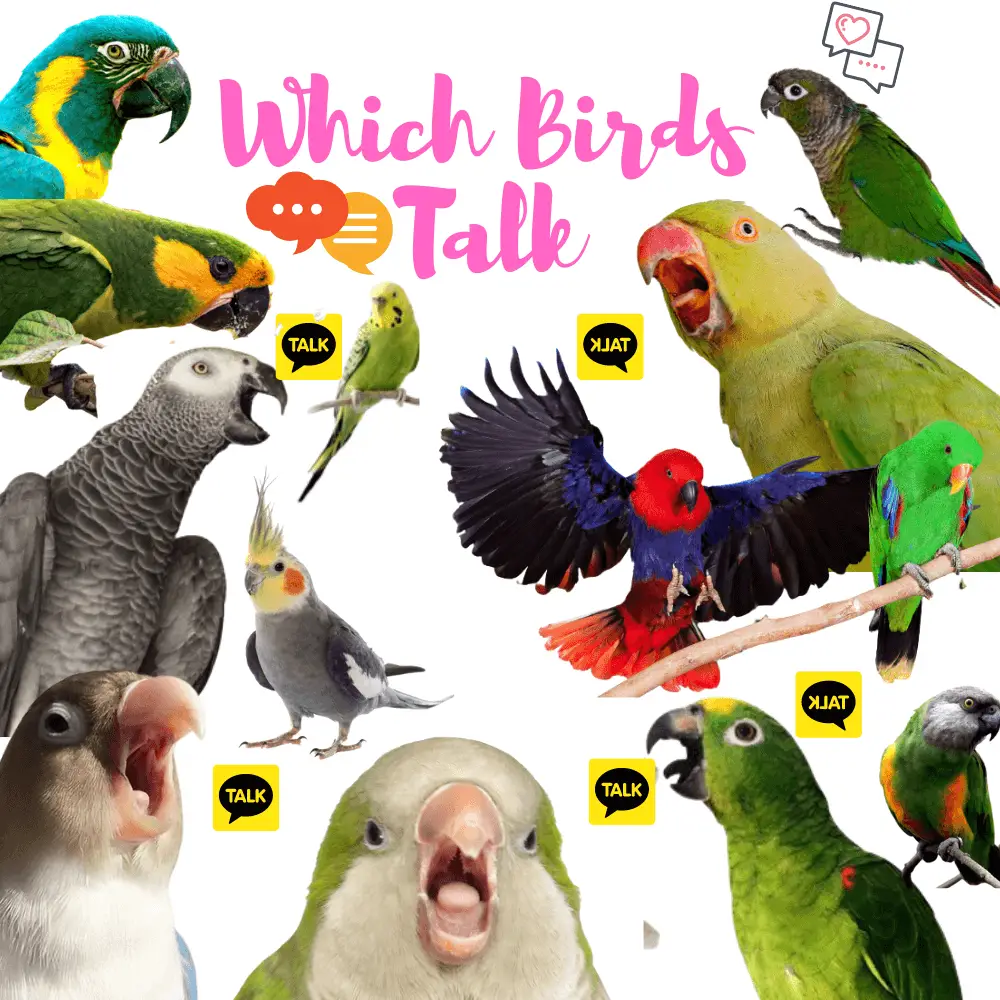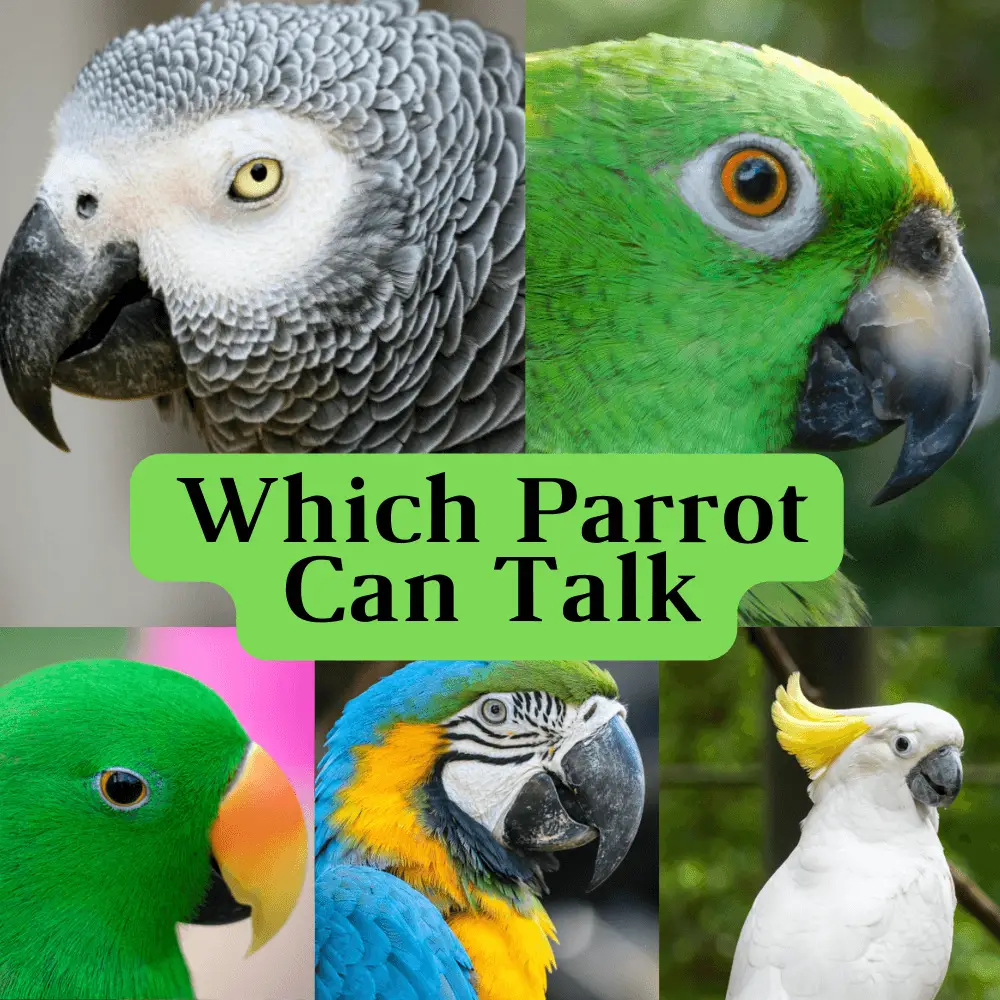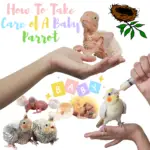
Birds that can talk: Birds are among the only animal creatures in the world that can learn to speak. However, this is more about imitating words – sometimes even entire sentences. The reason for this ability is the highly developed brain as well as the need to fit into a group of people through speech. But not all birds are talented enough for that. These are only very specific species.
Which birds talk? You can find out which bird species can learn to speak in our guide.
Which parrots are particularly gifted in language?
Parrots are among the speakers with the greatest talent in the bird world. The following are the parrot species that are said to have a special talent:
- African Grey parrot:
The grey parrot is particularly gifted at speaking. This parrot can learn a lot of individual words and sometimes recite entire sentences. He imitates human voices in their expression and tone of voice in a deceptively real way. - Amazon parrot:
The Amazon parrots, of which there are over 30 species, can also remember words and in some cases learn entire sentences. The yellow-necked Amazons have a very loud voice. That’s why the pretty parrot can also become a troublemaker by speaking. - Eclectus parrot:
The Eclectus parrot or noble parrot also has a great talent for language, which is characterized by its clear and easily understandable intonation. - Senegal and red-tailed parrot:
Furthermore, Senegal and red-breasted parrots have better pronunciation than most other parrot species, but their vocabulary is significantly lower. - Macaw parrot:
Macaws are very intelligent. In addition, the parrots are lively and playful. Sometimes they start talking. - Cockatoos:
Cockatoos are also clever language artists and often have good pronunciation.
However, the parrot species mentioned usually only speak if they have been trained early in their lives. Once the parrot gets started, it can build up a vocabulary of several hundred words.
Top 10 Most Popular talking pet Birds | Talking Parrots
SOURCE:Alen AxP
Why can parrots speak so well?
Parrots, unlike songbirds, for example, have a very thick tongue. With this, they can form different sounds, including words of human language. A well-trained vocal head in the throat also helps them.
The colorful birds are designed to blend in socially and mimic the vocalizations of the members of their group. The parrot lives partly in large swarms so that it is dependent on communicating well in order to find its close relatives again and again. When other parrots are missing in his environment, he imitates the language of his caregivers and begins to “babble”.
TIP: Would you like to experience parrots up close? Then visit the Vogelburg Weilrod in the Hochtaunus. This special bird park has become an asylum for parrots over the years. Here the animals are accommodated in a species-appropriate and varied way. Private parrot owners are made aware of how important it is to keep sensitive animals correctly.
Talking parakeets – which ones are particularly popular?
Parakeets are colorful and widely used as pets. The animals have a high entertainment value: they look beautiful, are lively, can become tame, and start talking. Popular birds include:
- Budgerigars:
Some budgerigars speak words or even entire sentences, although this talent is very different. Although the birds are small compared to the parrots, they can occasionally speak better than some of the larger species. However, budgerigars have a rather rough voice. That is why it is often difficult to understand them. Especially children love the small colorful birds. They like to build them places for climbing and romping with playgrounds for birds and bird toys. - Cockatiels:
Cockatiels are linguistically gifted to a certain extent. Often they whistle repeatedly heard melodies. - Rose-ringed parakeet:
Collared parakeets can learn a larger vocabulary and sometimes repeat entire sentences. They settled in the gardens of Indian temples, where priests there eventually noticed that the collared parakeets imitated their daily prayers. This led to the birds being considered sacred beings. - Quaker parrot:
The monk parakeet also begins to imitate the human voice and words with appropriate training. If the bird has been sufficiently socialized, it can use the words learned even in the correct situations.
In principle, all parakeet species can learn to speak under certain conditions. However, it always depends on the respective talent of the individual animal. Some are simply more gifted than others. Parakeets are also more likely to parrot certain words if they are kept alone and have no conspecifics around them. But a solitary keeping of the very social birds is not species-appropriate, since they live in the wild in the swarm.
Common hill myna – no parrots and still linguistically gifted?
Common hill myna is a very docile bird and has a certain talent for speaking. They like to imitate the exact pitch of their holder as well as sounds from their immediate surroundings. Some Common hill myna starts whistling, howling, or screaming, which can lead to many frightening moments when living with the birds.
Starlings and ravens can also learn to speak if they have been raised by humans and live with them permanently. However, they are not as linguistically gifted as parrots and parakeets, their vocabulary usually remains quite small.
List of linguistically gifted birds – their body length, weight, and country of origin
Which parrot can talk

| Bird species: | Body Length / Weight: | Country of origin: |
| Grey parrot
|
Approx. 33 cm / approx. 450 g | Africa |
| Amazon | Approx. 25 – 45 cm / weight e.g. blue-fronted amazon: approx. 400 – 660 g | In particular, tropical zones of South and Central America |
| Noble parrot | Approx. 35 cm height / approx. 440 – 620 g |
Main distribution: New Guinea and surrounding islands |
| Senegal Parrot
|
Approx. 23 – 26 cm / approx. 150 – 200 g | Africa |
| Red-tailed parrot
|
Approx. 28 – 30 cm / approx. 230 – 280 g | South America |
| Macaw
|
Approx. 86 – 100 cm / approx. 750 – 1300 g | South and Central America |
| Cockatoo | Approx. 30 – 66 cm / approx. 900 g | Australia, New Guinea, Sunda Islands, Philippines |
| Budgerigar
|
Approx. 18 cm / approx. 22 – 32 g | Australia |
| Cockatiel
|
Approx. 32 cm / 73 – 102 g | Australia |
| Rose-ringed parakeet | Approx. 40 – 43 cm (with tail) / approx. 90 – 120 g |
Certain regions of Africa and South Asia |
| Monk parakeet
|
Approx. 29 cm / approx. 10 g | South America |
| Hill myna
|
Approx. 24 – 35 cm / approx. 180 – 280 g | Southeast Asia |
| Starling | Approx. 15 – 54 cm (with tail) / Approx. 34 g – 290 g (depending on species) |
Europe, Asia, Africa, and Asia-Pacific islands |
| Raven Bird
|
Very different depending on the species | Almost everywhere in the world |
NOTE: The list does not claim to be exhaustive.
How do birds learn to speak?
The animals imitate words and imitate the sounds from the environment. So it can happen that parrots and parakeets imitate a creaking door all by themselves, but rather have a hard time with the first words. In general, language talent is very different.
In the swarm in the wild or in the group housing in a large aviary, the birds orient themselves on the sounds that their conspecifics emit. In solitary posture, the man becomes a substitute partner, so that the bird imitates the voice of a man. For this, it is usually necessary that the caregiver deals intensively with the bird and talks a lot with it. In addition, a young bird learns faster than an older animal that has already developed certain habits.
How do I teach my budgerigar or parrot to speak?
Above all, you need a lot of patience and time to teach your bird to speak. The basis for learning to speak is the trust between the respective bird and its owner. The animal must feel fully comfortable with you. As a caregiver, you should talk to your bird very often and for a long time, preferably several hours a day.
For imitation, you should choose simple and only a few words and repeat them over and over again. Words with many vowels that are easy to pronounce are particularly suitable. In the beginning, the bird only listens, only after some time does it begin to imitate them.
Budgerigars or parrots are receptive to study in the natural rest hours, which include lunch hours and late afternoon. In combination with crawling and stroking the feathers, the birds are very receptive to the words of their owners. For example, you can get your bird used to being stroked with a finger when it sits in its bird cage on the pole near the grid. Now the animal is completely relaxed and perceives exactly the words that you keep repeating.
Only when the animals reproduce the first words on their own, you should slowly expand the vocabulary. In doing so, you also repeatedly recite the already learned words together with the new terms.
A little anecdote:
Some birds are so clever that they associate words with certain occasions: my aunt owned budgie Hansi, over whose cage she hung a blanket every night to say goodbye to his well-deserved sleep. In the morning she covered the cage again and wished the little one a “Good morning”. One fine day, Hansi suddenly returned the good morning greeting. There was a big surprise. The bird repeated the morning greeting almost every day from now on – to the great joy of the whole family.
Tips to teach your bird to speak:
- Practice with him when he’s young!
- Use a few words with many vowels!
- Take advantage of the animal’s rest periods!
- Repeat again and again!
NOTE: Parrots almost always live in nature in pairs or in groups. Therefore, with justified exceptions (e.g. incompatible birds or birds already imprinted on humans), humans should not keep them alone. Parakeets are also sociable birds and should not be in human care without conspecifics. With perseverance and patience, your pet can also learn to speak if it has a partner.
Related Articles




















